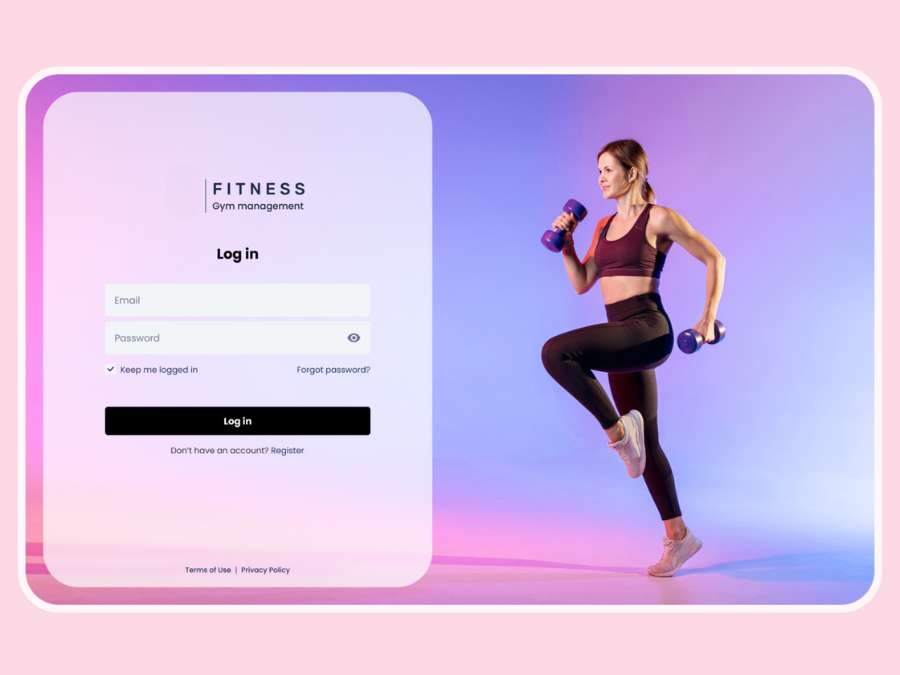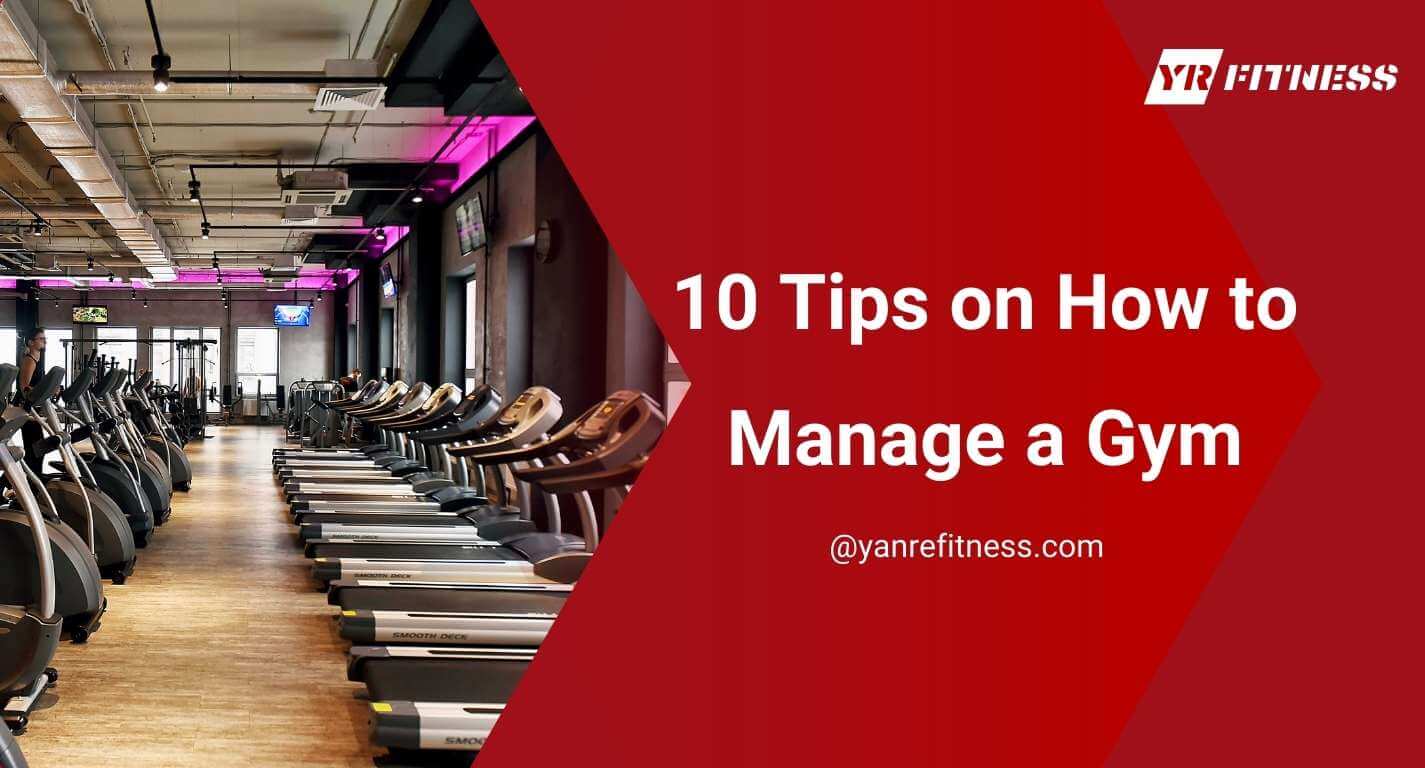Do you feel like managing your gym is like lifting a barbell that is too heavy? The truth is, with the right approach, gym management can be much smoother than you think.
As a gym expert, I’ve seen what works and what doesn’t in gym management. I’ve helped many fitness centers grow, and I’m here to share what I’ve learned with you.
Here’s a preview of the top 2 gym management tips every gym owner should know:
- Hiring Competent Staff
- Equipment Maintenance and Gym Upkeep
In this guide, you’ll learn how to create a growing gym environment through efficient operations and smart member management strategies. We will explore the tips to boost your gym’s performance and keep your members coming back.
So let’s get down to it!
Table of Contents
- 1. Hiring Competent Staff
- 2. Equipment Maintenance and Gym Upkeep
- 3. Creating an Efficient Member Management System
- 4. Handling Member Complaints and Feedback
- 5. Gym Financial Management
- 6. Marketing and Growing Your Gym Membership
- 7. Tracking Performance and Key Metrics
- 8. Legal Compliance and Risk Management
- 9. Use a Well-Designed Website to Promote Your Gym
- 10. Create a Gym Community Rather than a Structure
- Conclusion
- Dive Deeper Into Our Resources
1. Hiring Competent Staff
Hiring the right staff is essential to the success of your gym. Your team will be the face of your business, influencing member satisfaction and daily operations. Here are some key strategies to help you bring competent and passionate staff onboard:
- Look for Certifications and Experience: Always prioritize candidates with proper fitness certifications and experience in the industry. It shows that they have the knowledge and skills to provide high-quality service to your members.
- Assess Customer Service Skills: Gym staff need to interact with members regularly, so strong communication and problem-solving skills are essential. During interviews, ask questions that measure how they would handle different member scenarios.
- Test for Cultural Fit: Your gym’s culture should be a big part of the hiring process. Select individuals who align with your gym’s values and will contribute positively to the team dynamic.
- Provide a Trial Period: Offering a probationary period allows you to assess how new hires perform on the job. Here’s why that’s important; it will enable you to confirm if they meet your standards before fully committing.

2. Equipment Maintenance and Gym Upkeep
Proper equipment maintenance and regular gym upkeep are critical to creating a safe and welcoming environment for your members. Well-maintained equipment not only improves member experience but also extends the life of your investments. Here are the ways to maintain your gym:
- Inspect Equipment Regularly: Perform routine checks on free weights and machines like those from YR Fitness, to identify any wear and tear. Early detection helps prevent costly repairs and offers member safety.
- Create a Cleaning Schedule: Keep your gym clean by implementing a daily and weekly cleaning routine. This includes wiping down equipment, sanitizing surfaces, and keeping floors free of debris.
- Train Staff to Spot Issues: Equip your team with the knowledge to identify and report equipment problems. This proactive approach keeps small issues from turning into larger, more expensive ones.
- Stock Replacement Parts and Tools: Keep essential parts like cables, belts, and small tools on hand for quick fixes. Why is this so? This minimizes downtime and allows your equipment to stay in top condition.

3. Creating an Efficient Member Management System
An efficient member management system is the backbone of a well-run gym. It helps you track attendance, manage billing, and communicate with members. Here are the ways to build an effective system:
- Choose the Right Software: Invest in a user-friendly system that handles billing, scheduling, and member information. A reliable platform saves time and simplifies your day-to-day operations. Sounds impressive, right?
- Automate Member Communication: Use automated emails or SMS to send reminders for class bookings, payments, or special promotions. This keeps members engaged without the need for constant manual effort.
- Set Up Easy Payment Processing: Simplify payments by offering multiple options, such as credit cards, bank transfers, or auto-renewals. A smooth payment process boosts member satisfaction and minimizes missed payments.
- Offer an Online Portal: Provide members with an online portal where they can view their memberships, book classes, and update personal details. This self-service option makes managing their gym experience more convenient.

4. Handling Member Complaints and Feedback
Handling member complaints and feedback is crucial to maintaining a positive gym environment. When addressed properly, feedback can help improve your services and keep members happy. Here are some ways to effectively manage complaints and feedback:
- Listen Actively: When a member has a complaint, give them your full attention. Acknowledge their concerns and avoid interrupting, so they feel heard.
- Respond Promptly: Aim to address complaints as soon as possible. Here’s the thing, quick responses show that you value their feedback and are committed to resolving issues.
- Stay Professional and Calm: Even when a member is upset, it’s important to remain calm and professional. This helps diffuse the situation and keeps the conversation productive.
- Offer Solutions: Always aim to provide a solution that addresses the member’s concerns. An article in Help Scout shows that over 78% of customers are more likely to remain if they are well-catered. Whether offering a refund, fixing an issue, or providing additional services, make sure they are satisfied.
- Follow Up: After resolving a complaint, follow up to ensure the member feels the issue was handled well. This can help rebuild trust and retain their membership.

5. Gym Financial Management
Managing your gym’s finances effectively is key to long-term success. From controlling costs to maximizing revenue, financial management keeps your business stable and growing. Here are some important actions for managing gym finances:
- Track Expenses Carefully: Keep a detailed record of every expense, from rent to utilities and staff salaries. This helps you stay within your budget and avoid unexpected financial shortfalls.
- Create a Budget: Develop a monthly and yearly budget to plan for operating costs and future investments. A budget helps you allocate resources wisely and prevents overspending.
- Monitor Revenue Streams: Track all income, including memberships, personal training, and merchandise sales. This will help you understand where the bulk of your revenue comes from and where there are opportunities for growth.
- Control Costs: Regularly review your expenses to find areas where you can cut costs without sacrificing quality. But you know what else? This might involve negotiating supplier contracts or finding more affordable services.
- Set Financial Goals: Establish clear financial goals, such as increasing membership numbers or boosting retail sales. These goals will guide your decision-making and help you measure success.
6. Marketing and Growing Your Gym Membership
Effective marketing is the lifeline of growing your gym membership. With the right strategies, you can attract new members and keep your existing ones engaged. Here are the effective ways to market and grow your gym membership:
- Leverage Social Media: Use platforms like Instagram and Facebook to showcase your gym, promote events, and engage with potential members. Posting regularly keeps your gym top of mind for both current and future members.
- Offer Referral Programs: Encourage current members to bring friends by offering discounts or rewards for referrals. And the best part is that this creates a win-win situation where both you and your members benefit.
- Host Community Events: Organize events, such as fitness challenges or open houses, to attract new visitors. These events create excitement and give potential members a chance to experience your gym.
- Create Special Promotions: Promotions can create urgency and motivate people to join your gym. For example, offering limited-time deals, such as discounted memberships or free classes, to draw in new sign-ups.
- Partner with Local Businesses: Team up with local businesses to cross-promote services. This helps expand your reach and introduces your gym to new audiences in your community.

7. Tracking Performance and Key Metrics
Tracking the performance of your gym and analyzing key metrics is essential for making informed decisions. It helps you understand what’s working and where improvements are needed. Here are the important ways to track your gym’s performance:
- Monitor Member Retention Rates: Keep an eye on how long members stay active. This metric shows how well you’re meeting their needs and helps identify when to take action to keep them engaged.
- Track Membership Growth: Measure the number of new sign-ups and cancellations each month. This provides a clear picture of whether your marketing efforts and services are attracting new members. Below is a table that outlines the essential components for tracking membership growth:
Metric | Description | Purpose |
New Sign-Ups | The number of new members who sign up each month. | Measures how well your marketing and promotions attract new members. |
Cancellations | The number of members who cancel their membership in a given month. | Helps identify potential issues with member retention or service dissatisfaction. |
Net Growth | The difference between new sign-ups and cancellations (New Sign-Ups – Cancellations). | Shows the overall change in membership for the month, whether positive or negative. |
Starting Members | The number of members at the beginning of the month. | Provides context for the growth rate and helps calculate retention and acquisition success. |
Average Membership Length | The average time members stay active (can be calculated monthly, quarterly, or annually). | Provides insights into member loyalty and satisfaction, informing adjustments in services. |
- Analyze Class Attendance: Review attendance data for group classes to see which ones are most popular. Here’s the point, this helps you adjust your schedule and offerings to match member preferences.
- Review Revenue per Member: Calculate how much each member contributes to your total revenue, including personal training and other services. This helps you identify opportunities to upsell additional services.
- Measure Equipment Usage: Track how frequently equipment from YR Fitness are used to guarantee it’s meeting demand. This also helps you make informed decisions about maintenance and future equipment purchases.
8. Legal Compliance and Risk Management
Allowing your gym to comply with various legal requirements and managing risks effectively is essential for running a safe and successful operation. Compliance with the right entities protects your gym from fines, lawsuits, and operational issues. Here are the key entities that your gym should comply with:
- Local Health Departments: Your gym must adhere to local health codes, which include maintaining cleanliness, proper ventilation, and sanitation. Here’s what I mean, regular inspections from the health department let your facility meet these standards.
- Occupational Safety and Health Administration (OSHA): Compliance with OSHA regulations helps protect your employees from workplace hazards. This includes maintaining safe equipment, proper emergency exits, and a hazard-free environment.
- Labor and Employment Laws: Make sureyour gym complies with local labor laws, covering minimum wage, overtime pay, and employee rights. This also includes adhering to workplace policies such as harassment prevention.
- Insurance and Liability Providers: Your gym must comply with the requirements set by your insurance company. This often involves having safety protocols in place and allowing all members to sign liability waivers to reduce the risk of claims.
- Building and Zoning Codes: Your gym must meet local building codes, which govern aspects like facility design, fire safety, and accessibility for people with disabilities. Zoning laws also dictate whether your location is approved for gym operations.

9. Use a Well-Designed Website to Promote Your Gym
A well-designed website is essential for attracting new members and showcasing everything your gym has to offer. It serves as your gym’s online front door, helping people discover and engage with your services. Here are the key elements of a well-designed website to promote your gym:
- User-Friendly Navigation: Your website should be easy to explore, with quick access to important information like class schedules, membership options, and contact details. Simple navigation keeps visitors from getting frustrated and encourages them to explore.
- Mobile Responsiveness: Make sure your website works well on smartphones and tablets. Many users will visit your site from their phones, and a mobile-friendly design allows them to have a smooth experience.
- High-Quality Images and Videos: Use professional images and videos to showcase your gym’s facilities, staff, and classes. What makes this so special? Visual content helps create a strong first impression and makes your website more engaging.
- Clear Call-to-Actions (CTAs): Well-placed buttons help convert casual visitors into paying members. For example, setting clear CTAs, such as “Join Now” or “Sign Up for a Free Class,” to guide visitors toward taking action.
- Integrated Membership Sign-Up: Allow visitors to sign up for memberships directly through your website. This seamless process encourages immediate action and removes the need for extra steps.
10. Create a Gym Community Rather than a Structure
Building a gym community is about creating an atmosphere where members feel connected, valued, and supported, rather than just providing a physical space for workouts. This sense of belonging encourages members to stay loyal and engaged. Here are some methods to create a strong gym community:
- Foster Member Interaction: Encourage members to engage with each other through group classes, social events, and fitness challenges. The result? This builds friendships and strengthens the community bond within your gym.
- Support Personal Goals: Take the time to learn about your members’ individual fitness goals and celebrate their progress. Personalized attention makes members feel valued and part of something bigger.
- Offer Exclusive Benefits: Provide special perks for your members, such as discounts on merchandise or members-only events. These benefits create a sense of belonging and reward loyalty.
- Create a Welcoming Atmosphere: Train staff to greet members by name and create a friendly, inclusive environment. A warm welcome each visit helps members feel more at home in your gym.
- Collect Feedback: Regularly ask for feedback and involve members in decision-making, like voting on new class offerings or equipment. Giving members a voice strengthens their connection to the gym.
Conclusion
Managing a gym successfully involves balancing various responsibilities. By following the tips provided, you can improve your gym’s operations, boost member satisfaction, and ultimately grow your business.
We hope this guide has given you valuable insights into effective gym management. If you’re looking for high-quality gym equipment to enhance your facility, YR Fitness has you covered. Contact us today to learn how we can support your gym’s success with our top-tier equipment and expertise.
Dive Deeper Into Our Resources
For some insightful reads, we’ve curated a list of recommended articles just for you:
- Opening A Gym
- Gym Risk Management Plan
- Gym Cleaning
- Equipment Maintenance
- Gym Safety
- Gym Problems
- Fitness Equipment Storage Ideas for a Commercial Gym
- Gym Inspection Checklists
- Equipment Repairs
- Gym Manager Job Description
Still haven’t found what you’re looking for? Don’t hesitate to contact us. We’re available around the clock to assist you.
Related articles:





